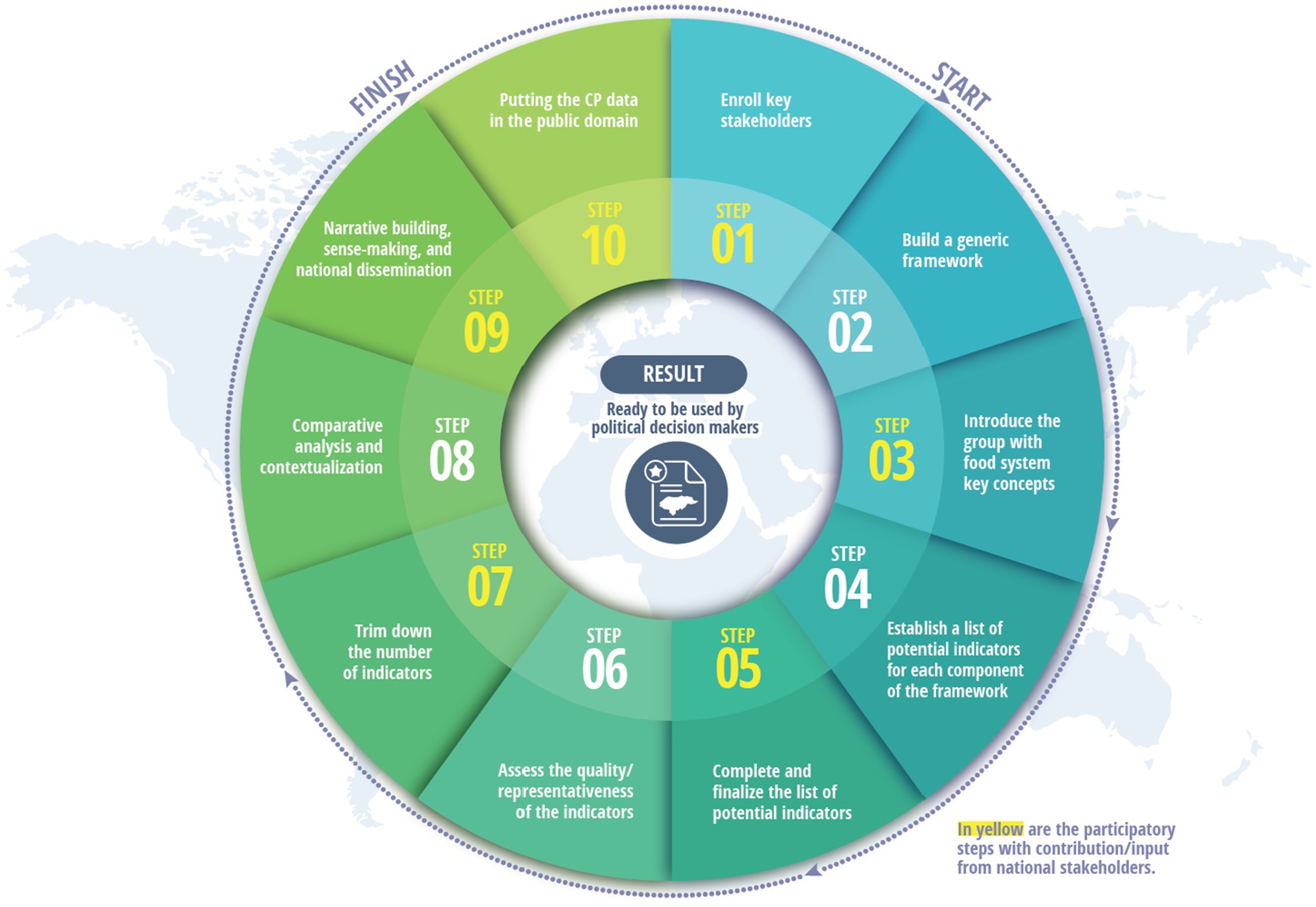Report on National Food System Transformation Pathways Post-UNFSS
Introduction: The 2021 UN Food Systems Summit and the Sustainable Development Goals
The 2021 United Nations Food Systems Summit (UNFSS) was convened as a pivotal moment to accelerate progress towards the Sustainable Development Goals (SDGs) by transforming global food systems. Despite its high-level objectives, the UNFSS process was met with significant criticism regarding potential corporate influence and a perceived lack of substantive outcomes. This report assesses the extent to which the summit has catalyzed ambitious national-level policy actions aligned with the comprehensive vision of the 2030 Agenda.
Analysis of National Policy Documents
Methodology
A systematic analysis was conducted on a corpus of 124 national food system pathway documents. Employing natural language processing (NLP) tools, the content of these documents was systematically compared to identify thematic priorities and policy direction.
Key Findings: A Disconnect from a Holistic SDG Framework
The analysis reveals a significant disparity between the integrated nature of the SDGs and the narrow focus of the national pathways. The findings indicate a predominant emphasis on a single aspect of the food system, while other critical areas essential for sustainable development are neglected.
- Dominance of Food Production: The national pathways are overwhelmingly focused on food production. While this directly relates to SDG 2 (Zero Hunger), it reflects a narrow interpretation that overlooks the interconnectedness of the food system.
-
Neglect of Critical System Components: Several key areas, which are central to achieving a range of SDGs, receive minimal attention. This oversight undermines the potential for holistic and sustainable transformation. The neglected areas include:
- Food Distribution and Processing: Lack of focus on these areas hinders progress on SDG 12 (Responsible Consumption and Production) by failing to address issues like food loss and supply chain efficiency.
- Consumption Patterns: The minimal attention to consumption and diets represents a missed opportunity to advance SDG 3 (Good Health and Well-being) and SDG 12.
- Environmental Impacts: The failure to adequately address environmental concerns signifies a disconnect from SDG 13 (Climate Action), SDG 14 (Life Below Water), and SDG 15 (Life on Land).
- Labour Conditions and Animal Welfare: The absence of these topics indicates a failure to integrate principles of SDG 8 (Decent Work and Economic Growth) and broader ethical considerations of sustainable production under SDG 12.
Conclusion: Limited Scope and Ambition for SDG Achievement
Homogeneity and Incrementalism
A notable finding is the limited variation in the topics addressed across the 124 national documents, despite differing local challenges. This homogeneity suggests that pathways are closely aligned with predefined global agendas rather than being tailored to specific national contexts. The proposed policy directions are largely incremental, reinforcing the existing food system rather than challenging its fundamental structures.
Implications for the 2030 Agenda
- The national pathways emerging from the UNFSS are insufficient in scope and ambition to drive the transformative change required to meet the food-related SDGs.
- The narrow focus on production at the expense of consumption, environmental sustainability, and social equity fails to embrace the indivisible and integrated nature of the 2030 Agenda.
- The analysis suggests that the UNFSS follow-up has not yet spurred the deep, systemic critiques or innovative policies necessary for a genuine food systems transformation that can meaningfully contribute to the full spectrum of Sustainable Development Goals.
Analysis of Sustainable Development Goals in the Article
1. Which SDGs are addressed or connected to the issues highlighted in the article?
The article on the United Nations Food Systems Summit (UNFSS) and the subsequent national pathways addresses several Sustainable Development Goals (SDGs) by analyzing the scope and ambition of global food system transformation efforts. The relevant SDGs are:
- SDG 2: Zero Hunger: This is the most central SDG, as the article’s entire focus is on the “global food system,” “food production,” “food distribution,” and “consumption.” The analysis critiques the national pathways for their narrow focus on production, which is a core component of achieving food security and ending hunger.
- SDG 8: Decent Work and Economic Growth: The article explicitly mentions that “labour conditions” receive minimal attention in the national food system pathways. This directly connects to the goal of promoting sustained, inclusive, and sustainable economic growth, full and productive employment, and decent work for all.
- SDG 12: Responsible Consumption and Production: This goal is highly relevant as the article criticizes the national pathways for neglecting “food distribution, processing, consumption, [and] environmental impacts.” These elements are fundamental to establishing sustainable patterns of consumption and production. The finding that pathways focus on production without addressing consumption or environmental impact points to a failure to embrace the principles of SDG 12.
- SDG 15: Life on Land: The article’s mention of “environmental impacts” and “animal welfare” as neglected topics connects to SDG 15. Food production is a primary driver of land use change, biodiversity loss, and land degradation. A truly transformative food system policy, which the article finds lacking, would need to address these impacts on terrestrial ecosystems.
- SDG 17: Partnerships for the Goals: The article evaluates the effectiveness of a major global partnership initiative, the UNFSS. It assesses “the extent to which the summit has contributed to ambitious policy follow-up at national level,” which relates to strengthening the means of implementation and enhancing policy coherence for sustainable development. The conclusion that pathways follow “predefined global agendas” without fundamental critique suggests weaknesses in the partnership’s ability to drive genuine transformation.
2. What specific targets under those SDGs can be identified based on the article’s content?
Based on the issues discussed, several specific SDG targets can be identified as being relevant, even if the article suggests they are not being adequately addressed:
-
Under SDG 2 (Zero Hunger):
- Target 2.4: “By 2030, ensure sustainable food production systems and implement resilient agricultural practices that increase productivity and production, that help maintain ecosystems, that strengthen capacity for adaptation to climate change, extreme weather, drought, flooding and other disasters and that progressively improve land and soil quality.” The article’s finding that “environmental impacts” and “animal welfare” are neglected indicates that the national pathways are failing to align with this target.
-
Under SDG 8 (Decent Work and Economic Growth):
- Target 8.8: “Protect labour rights and promote safe and secure working environments for all workers, including migrant workers, in particular women migrants, and those in precarious employment.” The specific mention that “labour conditions receive minimal attention” shows a direct link to this target and a gap in the policy documents analyzed.
-
Under SDG 12 (Responsible Consumption and Production):
- Target 12.1: “Implement the 10-Year Framework of Programmes on Sustainable Consumption and Production Patterns…” The article’s critique that “consumption” is overlooked in favor of production suggests a lack of implementation of integrated sustainable consumption and production policies.
- Target 12.2: “By 2030, achieve the sustainable management and efficient use of natural resources.” This is directly related to the concern about the minimal attention paid to the “environmental impacts” of food systems.
-
Under SDG 17 (Partnerships for the Goals):
- Target 17.14: “Enhance policy coherence for sustainable development.” The study’s core purpose is to analyze the policy directions of the UNFSS national pathways. The finding that they are “limited in scope and degree of ambition” and do not raise “fundamental critiques of the food system” is a direct assessment of the lack of policy coherence for a true sustainable transformation.
3. Are there any indicators mentioned or implied in the article that can be used to measure progress towards the identified targets?
The article does not mention official SDG indicators, but its methodology implies a clear set of indicators for measuring policy ambition and progress:
- Content and Scope of National Policy Documents: The primary indicator used in the study is the analysis of the “content of 124 national food system pathway documents.” The study uses “natural language processing tools” to systematically assess the documents.
- Level of Attention to Key Food System Components: The article measures progress by quantifying the attention given to different topics. An implied indicator is the proportion of policy text or number of mentions dedicated to various aspects of the food system. The article uses this to conclude that “food production dominates these pathways, while issues such as food distribution, processing, consumption, environmental impacts, labour conditions and animal welfare receive minimal attention.” This serves as a direct, measurable indicator of policy focus.
- Degree of Policy Ambition: The article assesses whether the policy directions are “mainly within the current food system” or represent “more fundamental critiques.” This implies an indicator related to the transformative potential of national policies, which can be measured by analyzing whether policies propose incremental changes or systemic transformations.
4. Table of SDGs, Targets, and Indicators
| SDGs | Targets | Indicators (Implied from the Article) |
|---|---|---|
| SDG 2: Zero Hunger | Target 2.4: Ensure sustainable food production systems and implement resilient agricultural practices. | Level of attention given to “environmental impacts” and “animal welfare” within national food system pathway documents. |
| SDG 8: Decent Work and Economic Growth | Target 8.8: Protect labour rights and promote safe and secure working environments for all workers. | Level of attention given to “labour conditions” in national food system pathway documents. |
| SDG 12: Responsible Consumption and Production | Target 12.1: Implement the 10-Year Framework of Programmes on Sustainable Consumption and Production Patterns. Target 12.2: Achieve the sustainable management and efficient use of natural resources. |
Level of attention given to “food distribution, processing, consumption, [and] environmental impacts” relative to “food production” in national policy documents. |
| SDG 17: Partnerships for the Goals | Target 17.14: Enhance policy coherence for sustainable development. | The scope and degree of ambition of national food system pathways, measured by whether they propose fundamental critiques or remain within the current system. |
Source: nature.com







